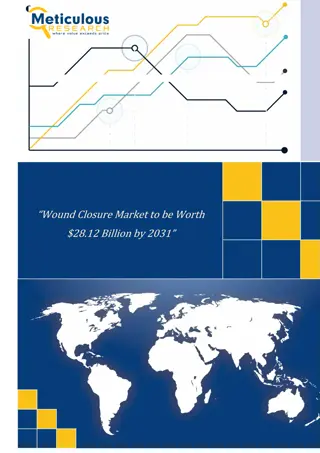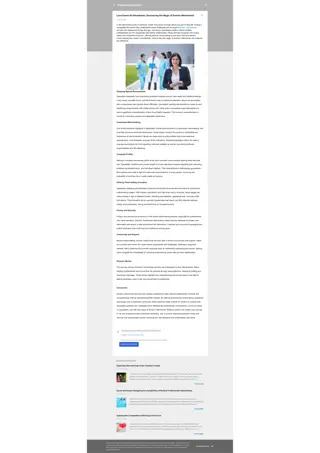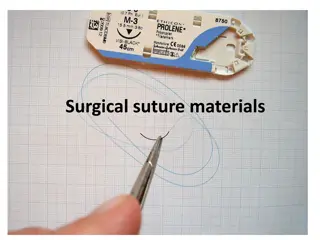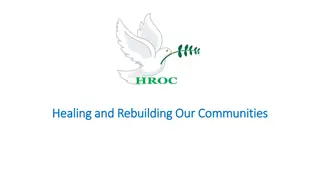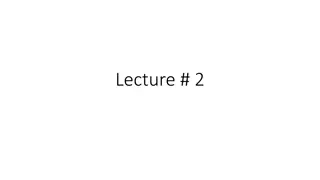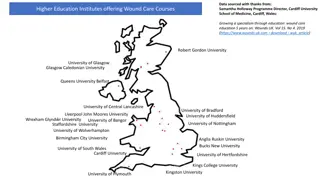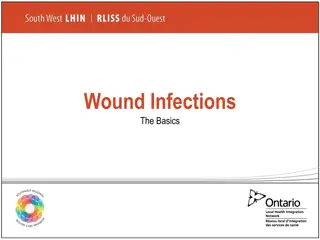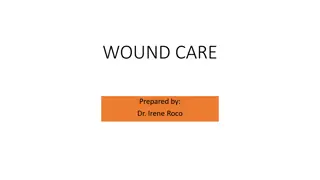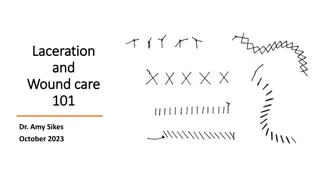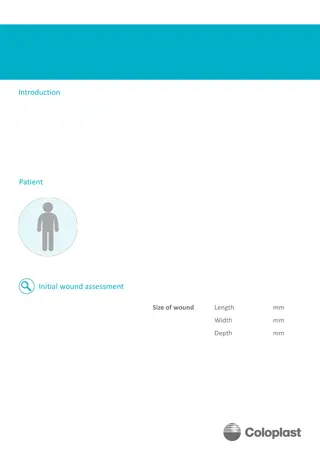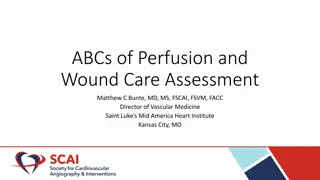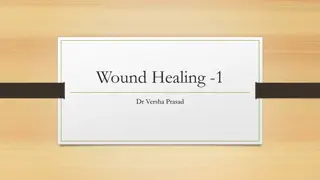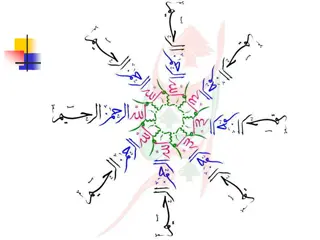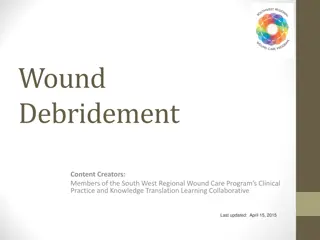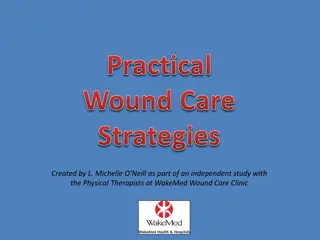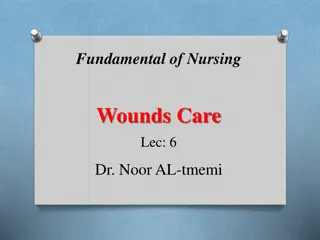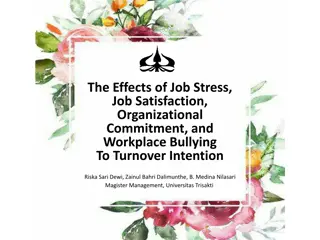Understanding Wound Healing Process by Secondary Intention
Exploring the stages and characteristics of wound healing by secondary intention, including open wounds, infection risks, necrosis, and non-suturing methods. Learn about the initial, inflammatory, granulation tissue formation, wound contraction stages, as well as potential complications like pigmentation, incisional hernia, hypertrophied scar, and infections.
Download Presentation

Please find below an Image/Link to download the presentation.
The content on the website is provided AS IS for your information and personal use only. It may not be sold, licensed, or shared on other websites without obtaining consent from the author. Download presentation by click this link. If you encounter any issues during the download, it is possible that the publisher has removed the file from their server.
E N D
Presentation Transcript
Wound Healing-2 Dr Versha Prasad
Wound Heeling by secondary Intention For the healing by secondary intention wound have fallowing characteristics I. Open wound- Wound is of open wound particularly when there is a significant loss of tissues. II. Infection- If the wound get infected healed by secondary union III. Necrosis- Presence of tissue necrosis. IV. Wound is not approximated by surgical sutures but it is left open.
Stages of wound healing by secondary union A. Initial Stage- The extensive tissue loss is immediately filled with the blood which soon clots. The clot dries up and forms scab. B. Inflammatory Phase- Surrounding tissue shows inflammation. Initially acute inflammatory response and later by macrophages C. Epithelial changes Like primary healing the epithelial cells from both the margins of the wound proliferate and migrate into the wound, but the proliferating epithelial cells do not cover the surface fully until granulation tissue from the base has started filling the wound space. So the preexisting viable connective tissue is separated from necrotic material and clot on the surface thus forming scab which cast off .
Stages of wound healing by secondary union D. Granulation tissue formation- The main bulk of healing by secondary union is by granulation tissue formation. It is formed by proliferation of fibroblast and neo vascularization from the adjacent viable tissues. Newly formed granulation tissue is deep red , granular and very fragile. Latter it becomes pale and white due to increase in collagen. The specialized structures like hair follicles and sweat glands are not replaced unless their viable residue remain
Stages of wound healing by secondary union E. Wound Contraction- Contraction of wound is the important feature of healing by secondary intention not seen in healing by primary intention. Wound contraction is due to presence of myofibrobast in the granulation tissue. The wound contracts to 1/3 rd to 1/4 th of its original size. The migrating epithelial cells soon cover the granulation tissue and forms regenerating epidermis. There is increased accumulation of collagen and fibroblast. This leads to scar formation.
Complication of Wound Healing I. II. Pigmentation III. Incisional Hernia- A weak scar specially after laparotomy ( Incision in the abdominal cavity and open it for treatment purpose) may be the site for incisional hernia. IV. Hypertrophied scar- The formation of excess collagen in the form of thick bundles which causes swelling at the site of wound known as Keloid . Infection- Infection delays wound healing
Complication of Wound Healing V. Contracture- Contracture is due to thickening and shortening of collagen bundles may cause serious cosmetics and functional disability particularly it is seen in deep and extensive skin burns and it is seen around joints. VI. Neoplasia- Cancers may develop in the scar tissue . e.g. Squamous cell carcinoma (SCC)
Factors influencing healing and repair There are multiple factors that delay wound healing. These are- Local Factors General Factors Local Factors- 1. Blood supply- Areas with good blood supply heals faster e.g. Face. Poor blood supply causes delayed healing. Fallowing are the example of [poor blood supply. - Varicose Ulcers- Due to stagnation of blood in varicose vein , the area gets poor blood supply. So this delays in healing of wound. - Bed sores- Continuous pressure resulting in long bed- ridden patients leads to development and poor healing of bed-sores. Bed sore develops at the pressure point areas.
Factors influencing healing and repair - Chronic Inflammation- Chronic inflammation leads to thickening of vessels wall . This causes poor blood supply leading to delayed healing - Old Age- Atherosclerosis of vessels wall in old age may lead to narrowing of blood vessels and decreased blood supply causing delayed healing of wound. - Movement- Movement causing continuous trauma to the wound which causes delayed wound healing. Continuous movement causing continuous disruptions to the new connective tissue formation leading to delay in wound healing e.g. Wounds in the corners of the mouth, fracture of the mandible.
Factors influencing healing and repair - Bony Adhesions-Adhesion of the wound edges to bony surfaces prevents proper contraction and proper approximation of the wound edges which causing delay in wound healing. - Radiation- Ionizing radiation causing destruction of vascularity and also inhibits wound contraction. This causes delay in wound healing. - Local Temperature- In hyper thermic environment wound healing is enhanced . Dry wound heals early. While in hypothermic environment healing is delayed.
Factors influencing healing and repair General Factors= - Infection and inflammation- These delays wound healing. - Nutritional deficiencies- Deficiencies of vitamin C , protein and zinc delays healing. Vitamin C is needed for collagen synthesis and formation of intercellular ground substances. So its deficiencies delays wound healing In case of scurvy healed wound or a healed fracture is so weak that it can again fractured and damaged Protein deficiency inhibits slows granulation tissue formation. So in case of starving there is delay in healing. Zinc is another important substance for wound healing . It uis an important cofactor for many enzymes. Its deficiency delays wound healing.
Factors influencing healing and repair Age- Wound healing is slower in older age group . Fasten in younger age group. Diabetes Mellitus- There is significant delay in wound healing in diabetics. This is due to its effects on carbohydrate metabolism. Steroids- Corticosteroids delays wound healing by inhibiting collagen synthesis. There is impaired granulation tissue formation and wound contraction. Steroids inhibits formation of proliferation of fibroblast and new vessel formation.



